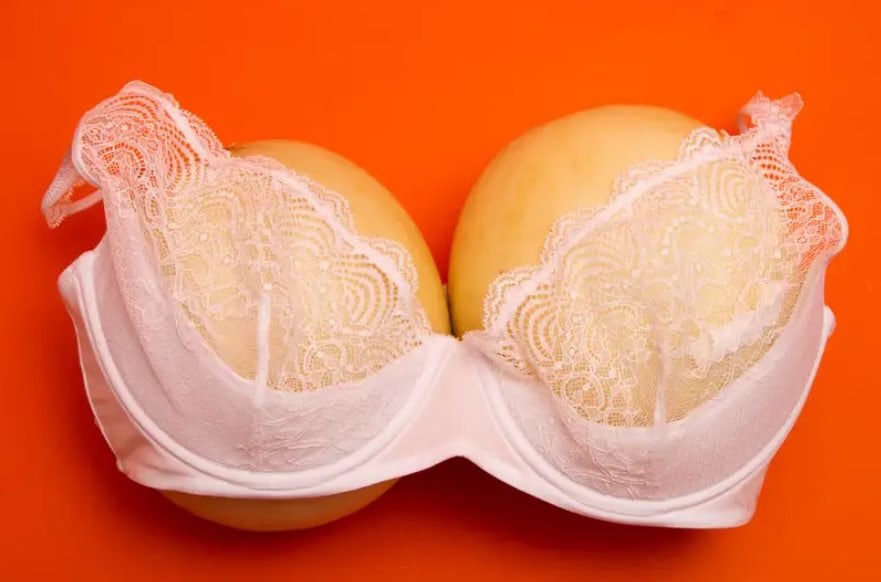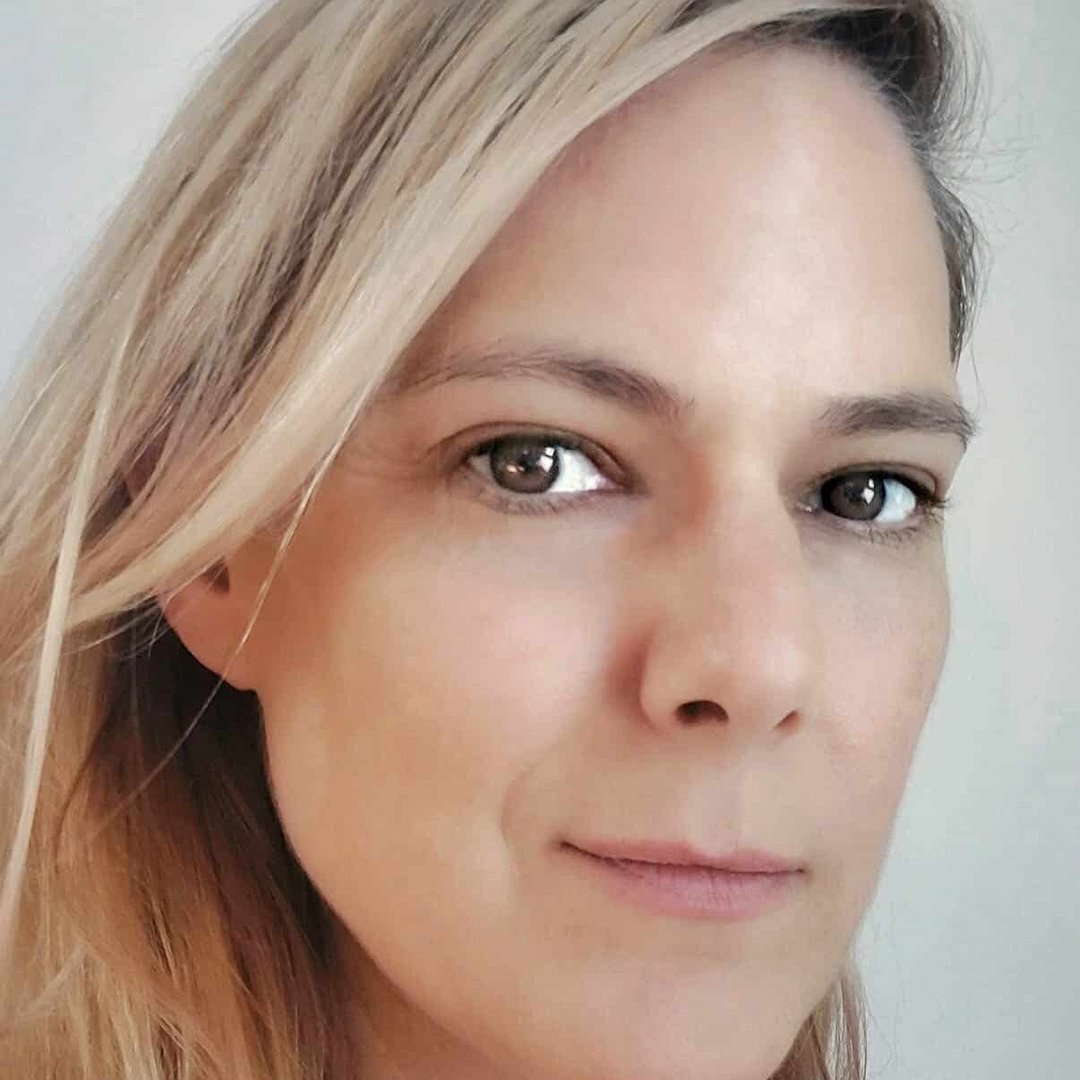The average woman’s chest has gone from a 34B to a 36DD in the last 60 years. ALIX NORMAN speaks to one Cyprus-based expert who is addressing why women are now busting out of their clothes!
“I’m a size 12,” says Tanya Dove. “But I have a DD bust. The fashion industry says I shouldn’t exist!”
Larnaca-based Tanya represents the majority rather than the minority of women – not just in Cyprus but around the entire world! Over the past few decades, the average bra size has dramatically increased. But when every single item of clothing sold on the high street is still cut to a standard B cup – be you a size 6 or 26 – there’s clearly a growing issue with boobs!
It’s a problem that Tanya, who moved from Hong Kong (where she was a professor of fashion at the university) to Cyprus in 2020, has set out to solve. At the age of 52, she’s poured her considerable talents – she’s worked with designer brands, authored books on pattern making, and run her own global fashion label – into creating a world first: digital software that allows any piece of clothing to be cut to the correct bust size.
The dilemma began, she explains, in the 1950s, when female fashion sizing was standardised. Two thirds of women were outside what was considered the norm – but those statistics were ignored in favour of profit. It’s an issue that has since been exacerbated by our changing bodies: in 1957, the typical western woman was 157cm tall, weighed 61kg, and was a British size 12 (EU size 40); today, women average 165cm in height, weigh 70kg, and are a dress size 16 (EU size 44). In Cyprus, the most recent data suggests that the average woman is 161cm, 72kg, and a dress size 14 (EU size 42). But the biggest problem of all is breast size…

Tanya at a photo shoot
“Not only are boobs growing by the year, women are also attempting to fit an industry standard that suggests every female, everywhere in the world, is a B cup!” Tanya reveals. “60 years ago, the typical woman had 34B breasts. Now, the average is 36DD – the difference between a small orange and a good size melon! Russian, North American and Scandinavian women also average a double D. In most of South America, the norm is a C cup; many African countries are a B; and the far East (including China and Japan) is usually an A cup.
“Here in Cyprus, women are most likely to be a C or D cup,” she adds. “Larger if there’s been cosmetic enhancement, something that seems to be fairly common on the island. And yet every single item of clothing in high street stores is still made for a B cup!”
All clothes are made first on a block, and then on a pattern, Tanya explains. A block is a simple template that gives the basic shape and dimensions of a garment; a standardised starting point. Patterns are then developed from blocks: detailed and customised to include design elements such as pockets or collars.
However, the majority of blocks are created from fitting models – young women who fit an outdated industry standard. “They’re usually in their early 20s, a standard size 12 and always a B cup,” says Tanya. “So when you turn these blocks into patterns, you simply get a scaled up B cup in every piece of clothing.
“Now, I’m also a size 12. But with my double D chest, there’s no way I fit into a shirt made for a B cup! If I want to avoid flashing the world, I have to get a size 16 – which then swamps my waist and comes half-way down my legs! Because the initial blocks are simply not made for the larger (now normal) bust, the majority of clothes simply don’t fit.”
As part of her research, Tanya has analysed 1,261 women from around the world: women from Nigeria, India, China, the Mediterranean, Eastern European and America. Less than 20 per cent actually fitted the B cup mass production model! So why hasn’t this changed?
“The creation of a block and pattern can take professionals a day or more,” Tanya reveals. “So to save time, the industry just keeps using the same standard sizing. But this could easily change if there was a simple set of templates that allowed any piece of clothing to be cut to any bust size.”
Drawing on her considerable expertise, Tanya has done just this, creating a digital library of garment blocks that allows any piece of clothing to be cut to any bust size. Using her software, a retailer can now create a shirt, dress, or top in any clothing size and any bust size. So rather than standardising every garment to a B cup (as happens with high street fashion giants), or spending hours with a tape measure and pattern paper (as in haute couture), any clothes retailer can instantly create a block and pattern for a shirt in a size 8 double F, a size 16 A cup, or even a size 40 C cup.
As the first person in the world to ever complete a PhD in pattern cutting, Tanya is well-placed to launch her novel software, which she calls Body and Cup Sizing.
“To be honest, we should have had this years ago,” she admits. “This software will save both mass retailers and individual tailors weeks of work and, potentially, hundreds of thousands in costs. By working digitally rather than from massive pattern tables, we’re negating space and location constraints. And we’ll also be reducing returns: $4.3 billion worth of clothes were returned in 2020; $5.6 billion are predicted to be returned in 2023.
“That’s over 100 million tonnes of garments sent to landfills each year,” Tanya adds. “Because most retailers find it more cost-effective to toss rather than repackage returned garments. Add to that the value to customers – imagine being able to order a dress in the exact dress and cup size you need, and be sure it will fit! – and this will be a game-changer. With the right investment, we’re ready to roll out the software and revolutionise the fashion industry. BC Sizing will change the way we look at boobs forever!”
For more information visit www.bcsizing.com/ or the Facebook page ‘Sewing in Cyprus’







Click here to change your cookie preferences